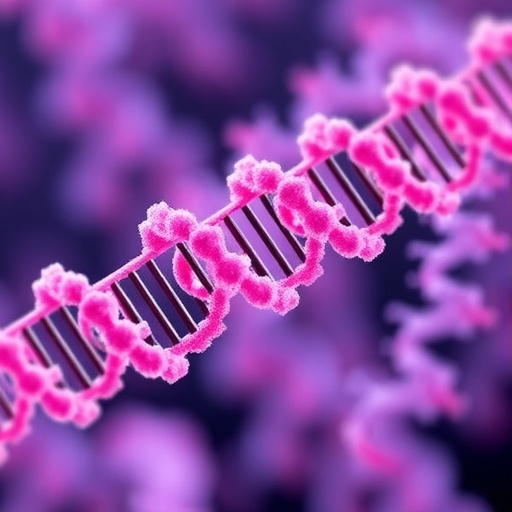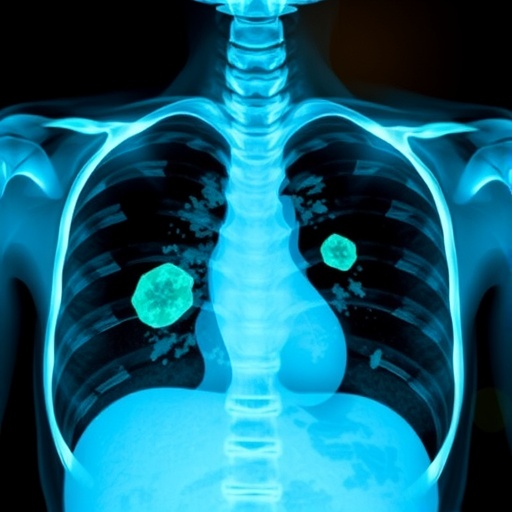
In a groundbreaking stride toward addressing the complex challenges posed by Fanconi anemia, a genetic disorder marked by progressive bone marrow failure and cancer susceptibility, researchers have unveiled novel therapeutic agents that promise to fundamentally alter treatment landscapes. Published in Cell Death Discovery, the study spearheaded by Hristodor, Cappelli, Baldisseri, and colleagues explores the groundbreaking development of translational read-through-inducing drugs (TRIDs). These compounds aim to restore protein function disrupted by nonsense mutations, a pervasive genetic anomaly in Fanconi anemia patients that truncates essential proteins prematurely.
Fanconi anemia, characterized by defects in DNA repair pathways, remains a therapeutic enigma due to its genetic heterogeneity and the complexity of its clinical manifestations. Conventional treatments, including bone marrow transplants and supportive care, often fall short in addressing the root genetic causes of the disease. Thus, the advent of TRIDs marks a revolutionary leap, targeting the molecular consequences of nonsense mutations through a mechanism that encourages ribosomes to bypass premature stop codons during mRNA translation. This approach potentially reactivates the synthesis of full-length, functional proteins, thereby reinstating vital cellular processes impaired in Fanconi anemia.
The development pipeline of these TRIDs reflects extensive biochemical and pharmacological innovation. By leveraging insights from ribosomal biology and RNA mechanics, the research team meticulously engineered small molecules capable of modulating translational fidelity without compromising the accuracy of normal protein synthesis. This delicate balance is critical, as indiscriminate read-through could lead to deleterious proteomic alterations. Preliminary in vitro assays demonstrated compelling efficacy in promoting ribosomal read-through across multiple Fanconi anemia-associated gene transcripts, fostering the generation of near-native full-length proteins.
.adsslot_skFJxZSzX0{width:728px !important;height:90px !important;}
@media(max-width:1199px){ .adsslot_skFJxZSzX0{width:468px !important;height:60px !important;}
}
@media(max-width:767px){ .adsslot_skFJxZSzX0{width:320px !important;height:50px !important;}
}
ADVERTISEMENT
Mechanistically, these TRIDs function by interacting with the ribosomal machinery at specific sites that regulate codon recognition and peptide elongation. This interaction transiently suppresses the recognition of premature termination codons, allowing the addition of amino acids beyond the mutated stop signals. The restored protein products exhibit corrected conformations and retain functional capacities, as validated through biochemical assays measuring DNA repair proficiency and cellular resistance to genotoxic stress. These findings underscore the clinical relevance of the therapeutic strategy, bridging molecular correction to phenotypic amelioration.
Importantly, translational read-through therapy offers a universally applicable modality across the spectrum of genetic mutations that truncate protein synthesis, transcending the limitations of mutation-specific approaches such as gene editing or exon skipping. This universality holds promise for a broad patient population suffering from nonsense-mediated genetic disorders beyond Fanconi anemia, including cystic fibrosis, Duchenne muscular dystrophy, and certain forms of cancer. The scalability and adaptability of TRID-based therapeutics could fundamentally shift paradigms in precision medicine.
Safety considerations remain paramount given the novelty of TRIDs in clinical contexts. The research addresses concerns of off-target effects, such as the inadvertent read-through of natural stop codons or disruption of the proteostasis network. Extensive cytotoxicity assays revealed minimal adverse effects at therapeutic concentrations, highlighting a favorable safety profile. Furthermore, iterative chemical optimization enhanced the specificity and bioavailability of lead compounds, ensuring their suitability for in vivo applications and eventual clinical trial progression.
The therapeutic implications extend beyond symptom management, targeting disease etiology at the molecular level. By restoring functional components of the Fanconi anemia pathway, TRIDs may improve hematopoietic stem cell function, reduce chromosomal instability, and decrease oncogenic risk. This is particularly critical, as patients with Fanconi anemia face profoundly elevated incidences of acute myeloid leukemia and solid tumors, complications that drive mortality and morbidity. A disease-modifying intervention thus could significantly enhance patient prognoses and quality of life.
Interdisciplinary collaboration underpinned the study’s successes, with integration of structural biology, medicinal chemistry, molecular genetics, and clinical insights. Advanced high-throughput screening techniques identified candidate molecules, while crystallography and cryo-electron microscopy elucidated drug-ribosome interaction modes. Meanwhile, patient-derived cellular models facilitated functional assessments, simulating the diverse mutational landscapes inherent to Fanconi anemia. This comprehensive approach ensured the translational relevance of findings and reinforced their robustness.
Future directions outlined by the investigators emphasize the necessity of rigorous clinical evaluation, including phase I/II trials to establish pharmacokinetics, dosing regimens, and long-term efficacy. Personalized medicine frameworks may guide patient selection based on mutation profiles, optimizing therapeutic outcomes. Additionally, combinatory treatment regimens incorporating TRIDs and current modalities such as hematopoietic stem cell transplantation or gene therapy could synergize disease amelioration.
The study exemplifies the vigor of modern molecular therapeutics that transcend classical symptom-focused treatments, embodying a shift toward genetic correction via innovative pharmacological strategies. It also invites broader scientific inquiry into translational control mechanisms as fertile ground for therapeutic intervention. The principles established herein might invigorate research across numerous genetic disorders, propelling the field toward increasingly targeted and effective remedies.
As these TRIDs progress along the drug development continuum, they evoke optimism among clinicians, patients, and researchers alike. Pan-genotypic approaches to genetic diseases herald an era where mutational diversity no longer hinders treatment availability, fostering equity and inclusivity in healthcare. Furthermore, the economic and logistical advantages of small-molecule therapeutics vis-à-vis gene therapies offer pragmatic benefits for global accessibility.
In summary, the pioneering work by Hristodor and colleagues elegantly bridges fundamental molecular biology with translational medicine, illuminating a path forward in the management of Fanconi anemia. By harnessing the cell’s own translational machinery to circumvent deleterious mutations, these newly developed TRIDs provide a beacon of hope for those long challenged by the devastating consequences of this genetic disorder. As clinical studies unfold, this innovation may redefine therapeutic standards and broaden horizons for countless patients worldwide.
Subject of Research: Development of translational read-through-inducing drugs as novel therapeutic strategies targeting nonsense mutations in Fanconi anemia.
Article Title: Development of translational read-through-inducing drugs as novel therapeutic options for patients with Fanconi anemia.
Article References:
Hristodor, A.M., Cappelli, E., Baldisseri, E. et al. Development of translational read-through-inducing drugs as novel therapeutic options for patients with Fanconi anemia. Cell Death Discov. 11, 286 (2025). https://doi.org/10.1038/s41420-025-02571-0
Image Credits: AI Generated
DOI: https://doi.org/10.1038/s41420-025-02571-0
Tags: cancer susceptibility in genetic disordersDNA repair pathway dysfunctionFanconi anemia treatment optionsinnovative therapies for bone marrow failuremRNA translation mechanismsnonsense mutations in Fanconi anemianovel agents for rare diseasesprotein function restorationribosomal biology in drug developmenttherapeutic advancements in geneticstranslational read-through drugsTRIDs for genetic disorders





